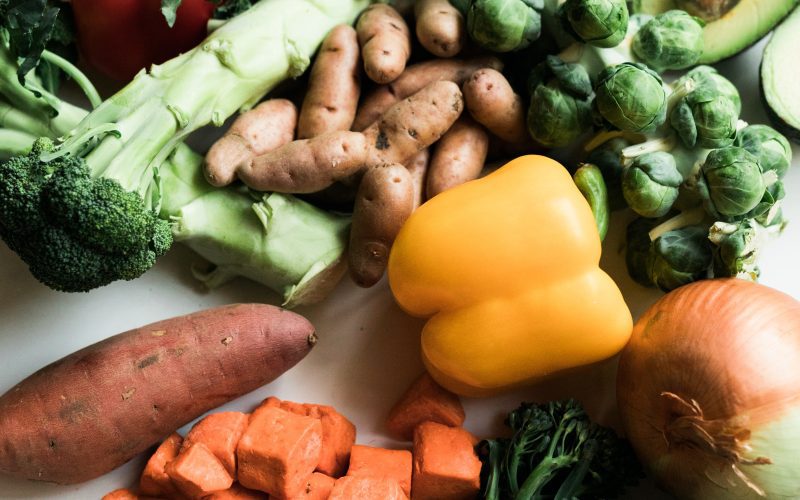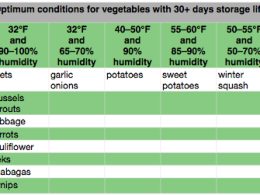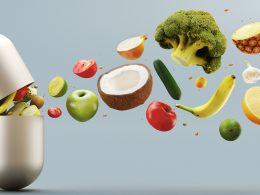Have you ever found yourself constantly searching for the “healthiest” vegetable to add to your diet? You’re not alone! With so many rankings and lists out there, it’s easy to fall into the trap of believing that one particular veggie reigns supreme. But what if we told you that nutrient density matters more than any ranking or label? In this blog post, we’ll explore why a high-nutrient diet should be your focus and provide a list of the top 10 vegetables with the highest nutrient density. Get ready to rethink everything you thought you knew about healthy eating!
What is nutrient density?
Nutrient density refers to the amount of nutrients in a food per unit of weight or volume. In other words, it’s a measure of how much nutrition you get from a particular food. Nutrients include vitamins, minerals, fiber, protein and healthy fats that our bodies need to function properly.
While all vegetables are nutritious, some pack more nutritional punch than others. For example, leafy green veggies like kale and spinach are known for their high nutrient density because they contain an abundance of vitamins A, C and K as well as minerals like iron and calcium.
On the other hand, starchy vegetables like potatoes have lower nutrient densities because they’re higher in calories and carbohydrates than other types of veggies. This doesn’t mean that you should avoid them altogether! It simply means that you should focus on incorporating more high-nutrient options into your diet.
It’s important to note that nutrient density isn’t the only factor to consider when choosing what foods to eat. Other factors such as taste preferences, allergies or intolerances may also play a role. However, by prioritizing high-nutrient options most of the time can help ensure that your body is getting all the essential nutrients it needs to thrive.
Why does nutrient density matter?
Nutrient density refers to the amount of nutrients, such as vitamins and minerals, that a food provides in relation to its calorie content. It is important because it can help ensure that your body gets all the essential nutrients it needs for optimal health without overconsuming calories. Eating foods with low nutrient density can lead to an increased risk of chronic diseases such as obesity, diabetes, and heart disease.
When you consume a high-nutrient diet, your body will function at its best. Nutrients are needed for every process in our bodies from digestion to regulating our mood. Consuming nutrient-dense foods also helps boost your immune system and energy levels while reducing inflammation throughout the body.
Nutrient density is particularly important when looking at vegetables since they play such an essential role in overall health. Vegetables provide vital fiber along with many other nutrients like Vitamin A, C & K which aid in cell growth and regeneration within our bodies.
By consuming nutrient-dense vegetables regularly, you not only improve your physical well-being but may also experience better cognitive function including memory recall ability and focus throughout the day!
The benefits of a high-nutrient diet
A high-nutrient diet can have a significant impact on overall health and well-being. Not only does it provide the body with essential vitamins and minerals, but it can also help to reduce the risk of chronic diseases such as heart disease, diabetes, and certain types of cancer.
Research has shown that consuming a diet rich in nutrient-dense foods such as fruits, vegetables, whole grains, and lean proteins can lead to weight loss, improved digestion, increased energy levels, and better mental clarity.
In contrast to diets that are high in processed foods or unhealthy fats, a high-nutrient diet promotes satiety and helps individuals maintain a healthy weight. By focusing on quality rather than quantity when it comes to food choices, individuals may find themselves feeling fuller for longer periods while consuming fewer calories overall.
Furthermore, nutrient-dense foods contain antioxidants which protect cells from oxidative damage caused by free radicals. This reduction in inflammation may lead to lower rates of chronic illness such as arthritis or Alzheimer’s disease.
Incorporating more nutrient-dense foods into your daily meals is an excellent way to improve your health outcomes through long-term dietary changes.
The top 10 vegetables with the highest nutrient density
When it comes to nutrient density, some vegetables are just better than others. Here are the top 10 vegetables with the highest nutrient density.
1. Spinach – With a high concentration of vitamins A and C, iron, potassium, and calcium, spinach tops the list as one of the most nutrient-dense vegetables.
2. Kale – This leafy green is loaded with vitamin K, vitamin C, fiber and antioxidants that help fight against harmful free radicals in your body.
3. Broccoli – Packed with vitamins A and C along with potassium and dietary fiber makes broccoli an excellent choice for maintaining optimal health.
4. Brussels sprouts – These may be an acquired taste but they pack quite a nutritional punch containing significant amounts of vitamins K & C as well as folate which supports cell growth.
5. Carrots – Rich in beta-carotene (which converts to vitamin A) these bright orange veggies support healthy eyesight while also providing essential nutrients like manganese & fiber!
6. Swiss chard – It is packed full of magnesium which helps keep our muscles strong while supporting heart health too!
7.
Tomatoes- Known for being rich in lycopene which provides antioxidant protection from cell damage helping reduce inflammation throughout our bodies!
8.
Sweet potatoes- Not only do they contain Vitamin B6 but also have loads of potassium making them great sources for those looking to maintain optimal blood pressure levels
9.
Garlic- Although not technically classified as a vegetable due to its classification within Allium family garlic contains allicin–a compound responsible for many immune-supportive benefits such reducing inflammation as well promoting cardiovascular health strengthens immunity by protecting against infections
10.
Beets-In addition to packing plenty of fibre into each serving beetroot has been shown through studies conducted on humans & animals alike that it can help protect again liver disease while improving athletic performance through increasing oxygen-carrying capacity thanks partly due their nitrates content.
How to measure nutrient density
Measuring nutrient density is an important step in ensuring that you are getting the most nutrition out of your food. There are a few different ways to measure the nutrient density of a particular vegetable or food.
One method is through using the Aggregate Nutrient Density Index (ANDI). Developed by Dr. Joel Fuhrman, ANDI scores range from 1-1000 and take into account several key nutrients such as vitamins, minerals, fiber, and phytochemicals. Vegetables with higher scores indicate higher nutrient density.
Another way to measure nutrient density is through using the Nutrient Balance Indicator (NBI), which takes into account both positive and negative aspects of a food’s nutritional profile. The NBI provides an overall score for each food based on its ability to provide essential nutrients while minimizing potential negative factors like saturated fat or added sugars.
Additionally, it’s important to consider other factors such as freshness and cooking methods when measuring nutrient density. Fresh vegetables typically have more nutrients than those that have been stored for longer periods of time, while overcooking can lead to loss of valuable vitamins and minerals.
Measuring nutrient density can help ensure that you are making informed decisions about what foods you choose to eat in order to optimize your health and wellbeing.
Conclusion
It’s important to shift our focus from ranking vegetables based on perceived health benefits to nutrient density. Nutrient density takes into account the actual amount of nutrients per calorie in a food item rather than relying on subjective rankings. By consuming high-nutrient foods, we can improve our overall health and reduce the risk of chronic diseases.
The top 10 vegetables with the highest nutrient density include kale, spinach, collard greens, turnip greens, mustard greens, watercress, chard, beet greens, Chinese cabbage and leaf lettuce. These vegetables are packed with essential vitamins and minerals that are vital for optimal bodily function.
Measuring nutrient density may seem daunting at first but there are many resources available online such as databases that provide detailed nutritional information about various foods. Understanding how to measure nutrient density will allow you to make informed decisions about your diet and ensure that you’re getting the most bang for your buck when it comes to nutrition.
Incorporating more high-nutrient foods into your diet is an easy way to boost your health without making drastic changes or adhering to strict diets. By prioritizing nutrient-dense veggies like kale or spinach over less nutritious options like iceberg lettuce or celery can be a simple yet effective step towards improving one’s overall well-being.
In short: forget about chasing after “superfoods” or ranked vegetable lists; instead aim for a balanced diet rich in whole foods with high levels of key nutrients – this is where true healthy eating lies!












